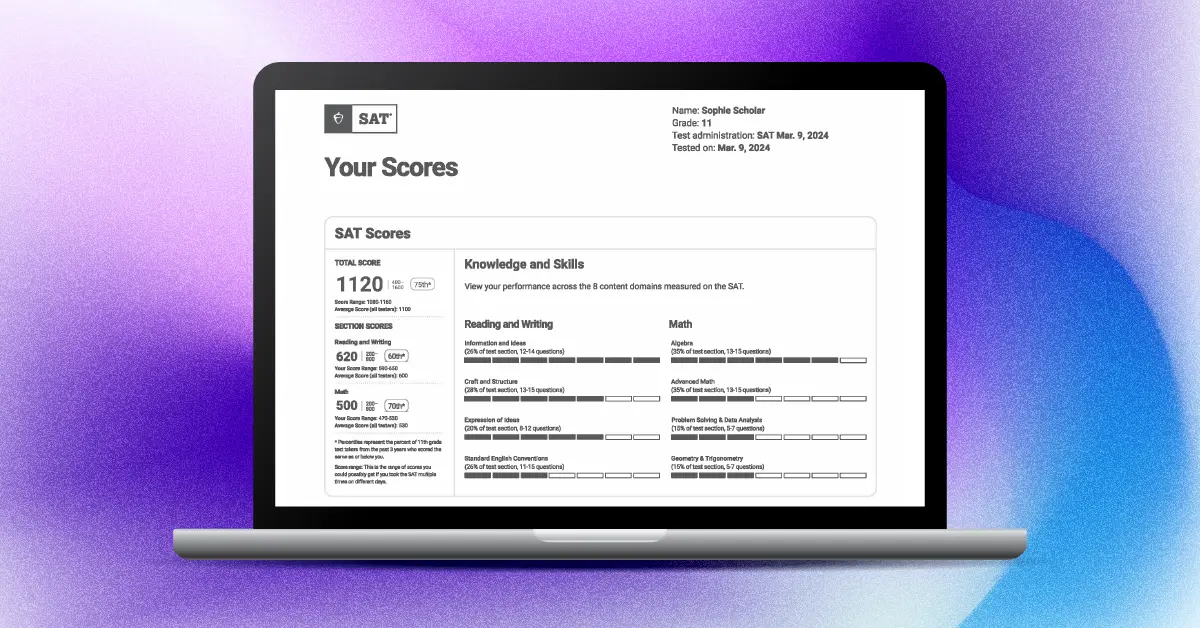Important SAT Update: Transition to Digital SAT
Effective December 3, 2023, the traditional paper-and-pencil format of the SAT has been discontinued. Starting in 2024, all students are required to take the Digital SAT, ushering in substantial changes in duration, format, material coverage, and question types. This shift to the Digital SAT represents a departure from traditional testing methods. It is crucial for students, educators, and test-takers to acquaint themselves with the new examination structure. Read more about the Digital SAT here.
Command of evidence questions in the SAT® Writing exam will test your skills judging an argument and making improvements through evidence. These questions rely on your ability to find relevant evidence to support claims, construct a cohesive argument, and read and translate the data in a graph.
Types of Command of Evidence Questions
1. Select the Most Effective Introductory Evidence
This type of question focuses on introducing information, arguments, or claims through evidence. You will be asked to choose the sentence or phrase that best sets up the information. Your goal is to support the main ideas by making a strong introduction through relevant evidence.
2. Determine How Data Should Be Presented in the Passage to Mirror Data in a Graphic
These questions ask you to evaluate the best way to present the graphic’s information in the passage. It is important to read and understand the surrounding context for the sentence in question and read the graph carefully to be sure you are assessing its information accurately. Your goal is to accurately translate the information in the graphic into claims in the text.
3. Assess Possible Additions to an Argument
These questions may ask you to look at a sentence that is being considered as an addition to the passage. You must judge whether the provided sentence would effectively strengthen the information and claims in the passage or if adding it is unnecessary. These are not “yes” or “no” questions: you will also have to determine why the sentence should or should not be added to the passage. Some of these questions will have you choose which sentence to add from a list, making a selection based on which sentence would best contribute to the surrounding contexts or larger claims. These questions often focus on the author’s goals and may ask for your judgment on the best way to achieve these goals by adding additional information.
Tips for Success With Command of Evidence Questions
Test Your Answer Choices With the Surrounding Contexts
When selecting new sentences to plug into the text, it is important to acknowledge the surrounding points before bubbling in. You don’t want to make any decisions without testing the answer choice for relevance, flow, and cohesiveness alongside the rest of the paragraph. Remember that these questions evaluate your use of evidence, and for evidence to be effective, it must have valuable connections to the claims. By plugging in your answer choice, skimming the paragraph with your answer alongside the surrounding sentences, you can be sure that you chose the best option.
Dedicate part of your preparation to your reading comprehension skills.
To make decisions about improving evidence, you should understand where the author’s claims occur and how the text presents evidence. You can create a strong foundation for understanding how to introduce evidence, assess data, or add evidence by developing your reading comprehension skills. Practice reading carefully with a focus on how the author supports their claims. Doing so can set you up for success when evaluating improvements within an argument.
Pay Attention to the Details
Silly mistakes are easy to make if you ignore small details in the Writing test. None of the sentences in question exist as isolated events. The evidence you utilize or judge may be tethered to a specified claim, but it is also interacting with the rest of the argument presented in the passage. It is important to pay attention to small details, like repetitions and tone, to ensure your evidence is precise and effective. Paying attention to the details is especially important for the command of evidence questions that rely on your understanding of the graphics.
Find Support for Your Choices in the Passage
Base your answer choices on what you know from the passage, and it is a good idea to check your work by noting support for your answers in the text. Ground your conclusions in the text itself. Your use of evidence should support the text, and the text should also support your evidence.
As you prepare for the Writing section of the SAT exam, consider these tips for the command of evidence questions. You can practice recognizing this question type and implement the strategies through UWorld’s SAT Prep course. The performance tracking tools available can help you pinpoint areas of improvement, and our study tools (like detailed explanations and thousands of practice problems) will help you achieve your goal score!




